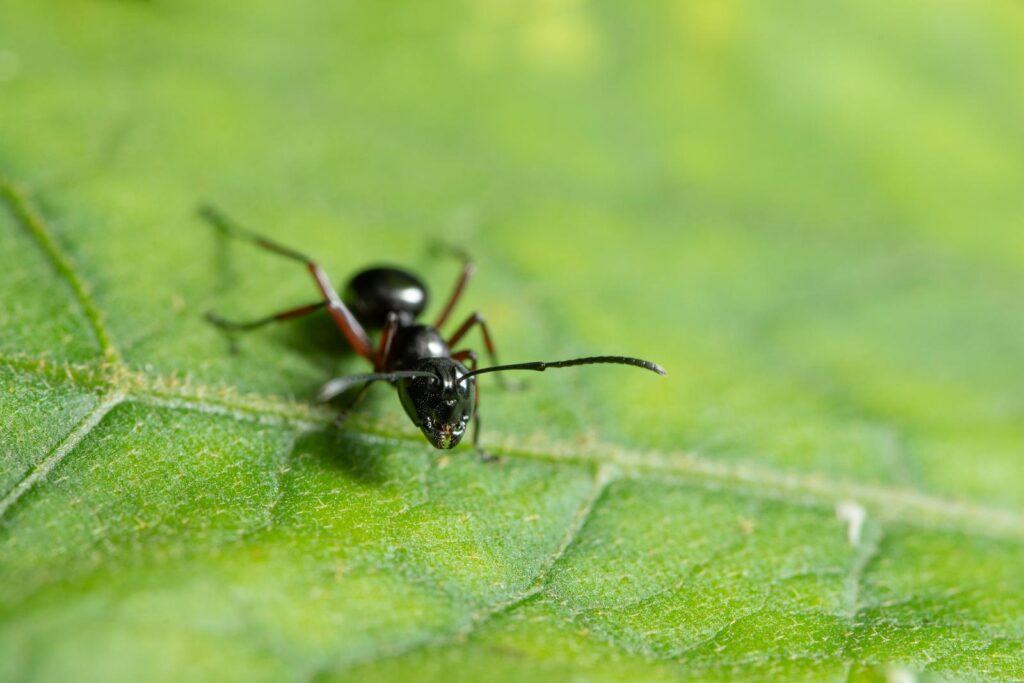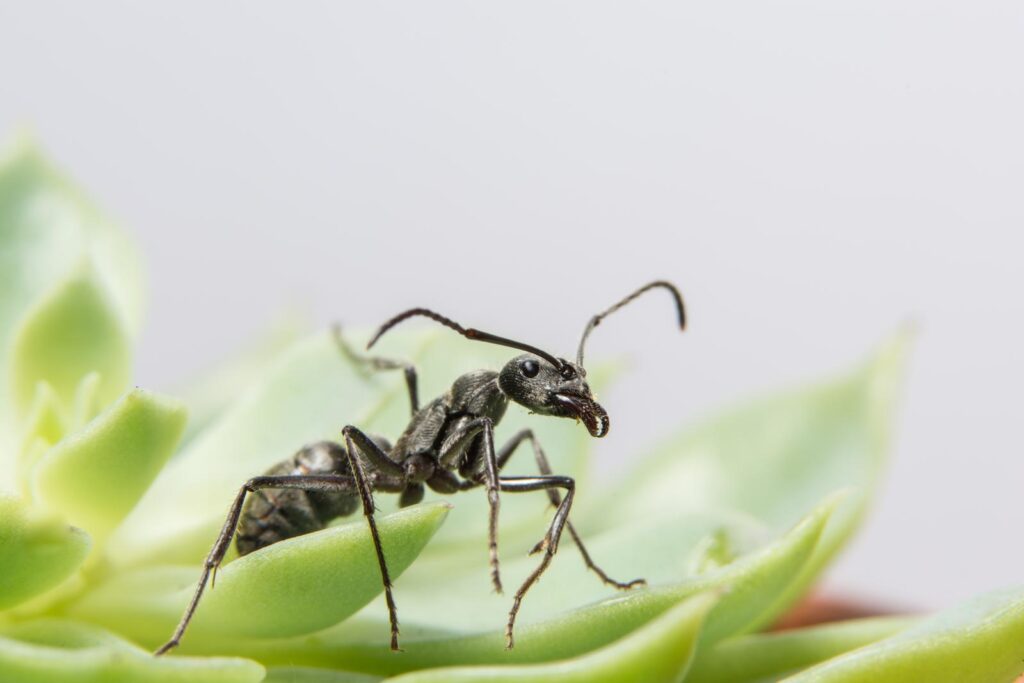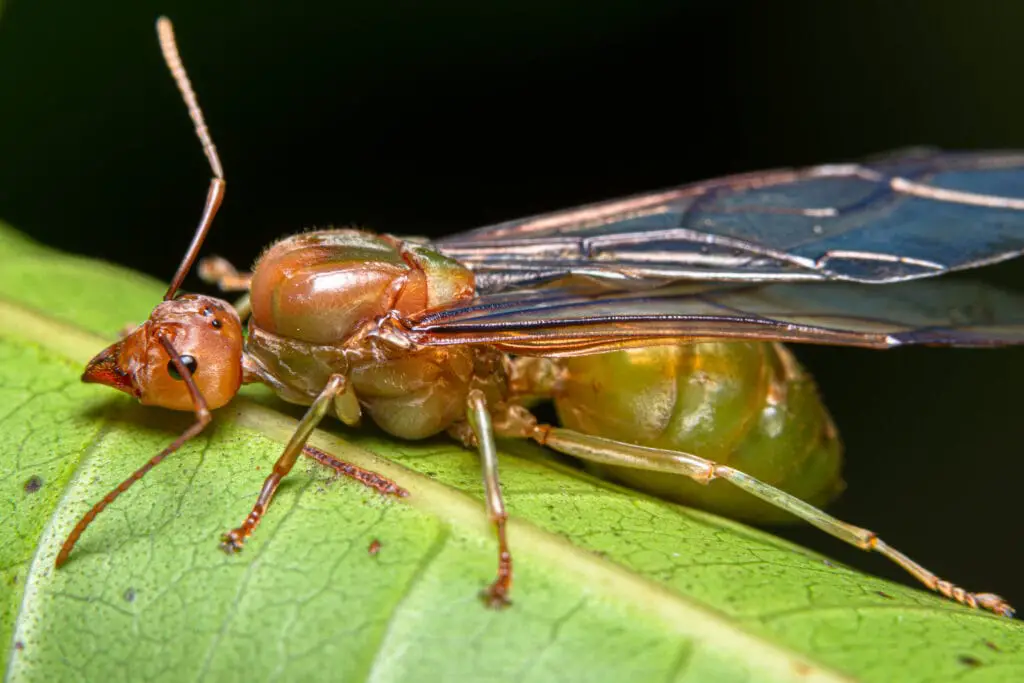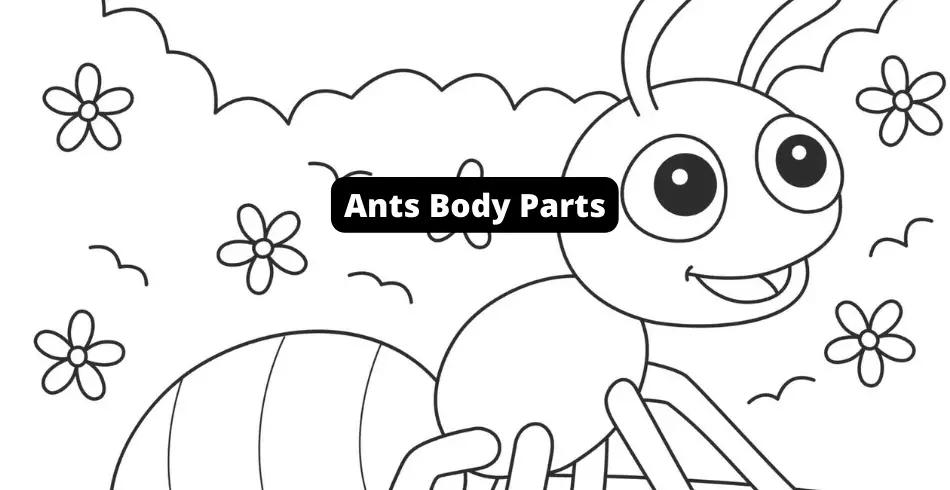Ants possess a well-defined and one-of-a-kind body type.
Unlike humans, they show their skeleton outside their body, known as an exoskeleton, whose sole purpose is to provide attachment to the muscles, similar to what the endoskeleton (the skeleton inside the body) does in humans.
Trust me; there’s WAY more to learn about the ant’s body.
In this post, we will dive deep into the anatomy of ants to take everything about their physique on board.
Let’s Do This!

What is the biggest part of an ant?
Generally, the abdomen is the biggest part of an ant. This is more accurately called the metasoma or gaster. It is the hinder part that contains ten segments. Also, the presence of the heart, reproductive, and digestive systems makes the abdomen their most protected asset during their activities.
Ants have three main body parts like other insects, but unlike their cousins, these three parts can not be called the head, thorax, and abdomen.
Their physical structure is quite different from that of other insects, and the part that distinguishes them from other insects is the petiole.
The three parts of their body are known as the head (the front section), the mesosoma (the middle section), and the gaster or metasoma (the back section).
Between the mesosoma and metasoma lies a thin waist called the petiole.
The waist arises in the pupal stage when a part of the true abdomen is pushed against the thorax, and they merge.
Along with all these characteristics, the abdomens rotation helps increase the speed and power of jumps.
Forest ants forage for food on the leaf debris, and they could feel sophisticated if they travel from one leaf to another on foot. To save time and energy, the worker ants move their metasoma to power their jumps.

Did you know? – The workers, in some species, have stings attached to the back of their bellies so that they can attack the enemy when in danger.
References:
https://sib.illinois.edu/entomology/news/155
https://en.wikipedia.org/wiki/Ant#Morphology
What is the smallest part of an ant?
The smallest part of an ant is the petiole or waist. This piece comes after the midsection and joins to the rear portion. In some species, the waist bears postpetiole behind it. It helps them with flexibility, the ability to move their stinger forward for attacking and hunting.
The upright rounded structure on the upper surface of the petiole is called the node, which is not necessarily present in all species.
In front of the node, a narrow segment can be found, which is termed the peduncle.
This type of narrow waist is also found in some species of wasps and bees.
The segmented structure of petiole is generally observed to identify and classify the ant subfamilies.

These tiny bugs are equipped with spines on their waist, which serve as powerful defense weapons to protect the workers against vertebrate predators.
Workers possess large hook-like spines, while those on the queen are small and curved.
Spines not only function as defensive indicators to threaten predators but can also be used to inject toxic chemicals into other animals.
References:
https://www.antwiki.org/wiki/Glossary_of_Terms#Petiole_and_Postpetiole
Are all body parts the same size on each ant?
All ants are not the same size. They can range from 0.75 to 52 mm in size, meaning all body parts are not the same size for each species of ant. The size of each body part depends on the species of ants and the type of particular ant.
Ants that are the same size in a single colony are called monomorphic, while those that vary in size are called polymorphic ants.
These castes within them got rise as they evolved with time, and their colonies and activities increased and became more complex.
We did research that shows that the body size of workers determines the division of labor among them.
It was analyzed that the larger workers do not engage in foraging.
Compared to polymorphic ants, monomorphic ants are more adaptable to their tasks.

Another thing that should be taken into account is that in monomorphic species, the job assigned to the worker changes as the worker ages, while in polymorphic colonies, tasks are given to workers according to their size.
Ants can also be differentiated by the size and shape of their heads and their attachments like mandibles, antennae, and compound eyes because different species come with different shapes and sizes of ant heads.
For example, a typical ant has broad and triangular mandibles, while an army ant soldier carries huge, hooked mandibles with sharp blades.
Some ants are equipped with heavy muscular heads, while some have tiny heads with huge eyes and powerful jaws.
References:
https://askabiologist.asu.edu/many-faces-ants
https://en.wikipedia.org/wiki/Ant#Distribution_and_diversity
https://www.mdpi.com/2075-4450/11/7/433/htm
https://www.pctonline.com/article/monomorphic-vs–polymorphic-ants–b—font-/
What is the middle segment of an ant called?
The middle segment of an ant is labeled mesosoma or alitrunk. It consists of three segments with three pairs of legs and wings attached, which means a bunch of muscles is incorporated within the alitrunk. The mesosoma is crucial for ants movement.
The members of the suborder apocrita, like ants, bees, and wasps, have the first segment of the metasoma fused with the mesosoma called propodeum.
The front end of the midsection consists of strong neck muscles that support the head and its jaws, and give them the ability to carry weight that weighs more than their own body.
Mesosoma is known to be the center of many muscular and structural units that offer flexibility and movement to the head, legs, wings, and metasoma.

The prothorax, the anterior segment of the thorax, provides sufficient space for attachment of the head, thus, allowing better skull mobility.
References:
https://academic.oup.com/isd/article/6/2/2/6553779#342636426
https://en.wikipedia.org/wiki/Thorax_(arthropod_anatomy)
What insect has body parts like an ant?
Ants are closely related to insects of the superfamily Apoidea which includes bees and some hunting wasps. Ants and bees are similar in several ways: they both reside in groups, the foragers bring food back home, and they are social insects.
Ants, bees, and wasps belong to the order Hymenoptera, which means they must share similar characteristics.
They all have an external covering called an exoskeleton, three pairs of jointed legs, and a segmented body divided into three parts.
Another attribute that exhibits a strong connection between these three species of insects is the constriction that appears after the thorax and joins it with the abdomen.
This junction between the midsection and rear portion is known as the petiole or waist.
The larval stage is also a sign of similarity between ants and bees.
They both pass through a series of changes during their developmental period known as metamorphosis.
The eggs laid by the queen hatch to form a larva which grows into a pupa (the resting stage), and ultimately an adult arises.
They are holometabolic insects; they pass through all four stages of development of complete metamorphosis.
The absence of wings in ants is believed to be a dissimilarity between ants and bees, but that isn’t true.

Ants, too, develop wings when they need to. The male ants and the queen carry wings on their back. The male files for a queen to impregnate her and then dies.
The fertilized queen then flies away to build a new colony.
References:
https://sciencing.com/characteristics-do-bees-ants-share-8218385.html
https://news.cornell.edu/stories/2017/04/study-settles-debate-over-origins-ants-and-bees

